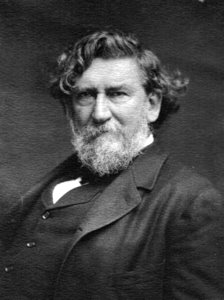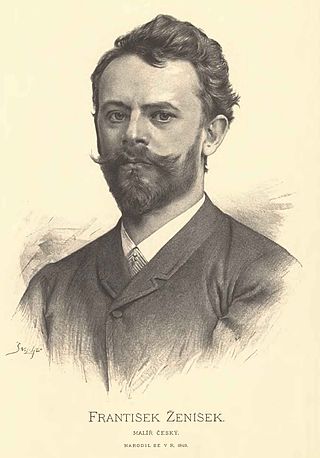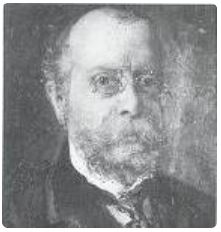

Frederick Randolph Spencer (7 June 1806, Lenox, New York - 3 April 1875, Wampsville, New York) was an American portrait painter.


Frederick Randolph Spencer (7 June 1806, Lenox, New York - 3 April 1875, Wampsville, New York) was an American portrait painter.
His father, General Ichabod Smith Spencer (1780-1857), was a lawyer and the first postmaster of Canastota. At the age of fifteen, he became interested in art after seeing an exhibition of portraits by Ezra Ames. In 1822, he was enrolled at the Middleboro Academy in Utica, where he made his first attempts at portrait painting. He attracted the attention of, and received some informal lessons from, William Dunlap, who was holding an exhibition there. [1]
Three years later, he convinced his father to let him go to New York, where he made sketches of the casts at the American Academy of the Fine Arts and took some lessons from its president, John Trumbull, who was impressed with his work. He then returned home and became a portrait painter. [2]
After some time in Albany and Utica, he returned to New York and established a studio. By 1832, he was an Academician at the American Academy and served on its board of directors. [1] He was also named a member of the National Academy of Design, and held several positions there until 1850, when he left to devote himself entirely to painting. [2] He participated regularly in exhibitions at the American Academy (which closed in 1841) and the National Academy, until 1853.
By 1858, he had amassed a considerable fortune and retired to a farm in upstate New York, where he lived until his death in 1875, following a brief illness. [2] His wife, Harriet, whom he had married in 1835/36, died four months later.

The Art of the United Kingdom refers to all forms of visual art in or associated with the United Kingdom since the formation of the Kingdom of Great Britain in 1707 and encompasses English art, Scottish art, Welsh art and Irish art, and forms part of Western art history. During the 18th century, Britain began to reclaim the leading place England had previously played in European art during the Middle Ages, being especially strong in portraiture and landscape art.

William Sidney Mount was a 19th-century American genre painter. Born in Setauket, New York in 1807, Mount spent much of his life in his hometown and the adjacent village of Stony Brook, where he painted portraits, landscapes, and scenes inspired by daily life from the 1820s until his death in 1868 at the age of sixty. During that time he achieved fame in the U.S. and Europe as a painter who chronicled rural life on Long Island. He was the first native-born American artist to specialize in genre painting. Mount was also passionate about music and a fiddle player, a composer and collector of songs, and designed and patented several versions of his own violin which he named the "Cradle of Harmony." Many of his paintings also feature musicians and groups of people engaged in dance in rural settings.

Samuel Bell Waugh was a 19th-century American portrait, landscape, and moving panorama painter. His portrait subjects included Presidents Abraham Lincoln and Ulysses S. Grant.

Robert Walter Weir was an American artist and educator and is considered a painter of the Hudson River School. Weir was elected to the National Academy of Design in 1829 and was an instructor at the United States Military Academy. His best-known work is Embarkation of the Pilgrims in the United States Capitol rotunda in Washington, D.C. More than 450 of his works are known, and he created many unsigned paintings that may never be attributed to him.

George Fuller was an American figure and portrait painter.

Frank Weston Benson, frequently referred to as Frank W. Benson, was an American artist from Salem, Massachusetts known for his Realistic portraits, American Impressionist paintings, watercolors and etchings. He began his career painting portraits of distinguished families and murals for the Library of Congress. Some of his best known paintings depict his daughters outdoors at Benson's summer home, Wooster Farm, on the island of North Haven, Maine. He also produced numerous oil, wash and watercolor paintings and etchings of wildfowl and landscapes.

Thomas Worthington Whittredge was an American artist of the Hudson River School. Whittredge was a highly regarded artist of his time, and was friends with several leading Hudson River School artists including Albert Bierstadt and Sanford Robinson Gifford. He traveled widely and excelled at landscape painting, many examples of which are now in major museums. He served as president of the National Academy of Design from 1874 to 1875 and was a member of the selection committees for the 1876 Philadelphia Centennial Exposition and the 1878 Paris Exposition, both important venues for artists of the day.
Nicolai Fechin was a Russian-American painter known for his portraits and works featuring Native Americans. After graduating with the highest marks from the Imperial Academy of Arts and traveling in Europe under a Prix de Rome, he returned to his native Kazan, where he taught and painted. He exhibited his first work in the United States in 1910 in an international exhibition in Pittsburgh, Pennsylvania. After immigrating with his family to New York in 1923 and working there for a few years, Fechin developed tuberculosis and moved West for a drier climate. He and his family settled in Taos, New Mexico, where he became fascinated by Native Americans and the landscape. The adobe house which he renovated in Taos is listed on the National Register of Historic Places and is used as the Taos Art Museum. After leaving Taos in 1933, Fechin eventually settled in southern California.

Raimundo de Madrazo y Garreta was a Spanish painter from the Madrazo family of artists who worked in the Realistic style, although his later work shows signs of Rococo and Japanese influence. He was known primarily for his genre paintings and portraits. His grandfather was José de Madrazo, his father was the portrait painter Federico de Madrazo and his brother was Ricardo de Madrazo.

Soren Emil Carlsen was an American Impressionist painter who emigrated to the United States from Denmark. He became known for his still lifes. Later in his career, Carlsen expanded his range of subjects to include landscapes and seascapes as well.

Thomas Satterwhite Noble was an American painter as well as the first head of the McMicken School of Design in Cincinnati, Ohio.

František Ženíšek was a Czech painter. He was part of the "Generace Národního divadla", a large group of artists with nationalistic sympathies.

Leopold Gould Seyffert was an American artist. Born in California, Missouri and raised as a child in Colorado and then Pittsburgh, his career brought him eventually to New York City, via Philadelphia and Chicago. In New York the dealer Macbeth established him as one of the leading portraitists of the 20th century and his over 500 portraits continue to decorate the galleries, rooms and halls of many of America's museums and institutions.

John Nelson Shanks was an American artist and painter. His best known works include his portrait of Diana, Princess of Wales, first shown at Hirschl & Adler Gallery in New York City, April 24 to June 28, 1996 and the portrait of president Bill Clinton for the National Portrait Gallery.

Walter William Ouless was a British portrait painter from Jersey. He became an Associate of the Royal Academy (ARA) in 1877 and a full member (RA) in 1881.

Emma Sandys was a British Pre-Raphaelite painter.

Jennie Augusta Brownscombe was an American painter, designer, etcher, commercial artist, and illustrator. Brownscombe studied art for years in the United States and in Paris. She was a founding member, student and teacher at the Art Students League of New York. She made genre paintings, including revolutionary and colonial American history, most notably The First Thanksgiving held at Pilgrim Hall in Plymouth, Massachusetts. She sold the reproduction rights to more than 100 paintings, and images of her work have appeared on prints, calendars and greeting cards. Her works are in many public collections and museums. In 1899 she was described by New York World as "one of America's best artists."

Michael William Sharp was an English painter.

Spencer Baird Nichols (1875–1950) was an American portrait painter, illustrator and muralist. Nichols was born to Henry Hobart and Indiana Jay Nichols on February 13, 1875 in Washington, D.C., and attended the Corcoran School of Art. He died August 28, 1950 in Kent, Connecticut. While he received much recognition and was quite prolific in his time, much of his creative work was ultimately destroyed, lost or unattributed to him. What survives are a handful of easel paintings and some commercial work, particularly book illustrations and murals. More of his earliest works, signed with just the initials, SBN, may gradually come to public recognition with the help of publications such as this.

Harry Humphrey Moore was an American painter; best known for his works depicting Japan, Spain and North Africa.